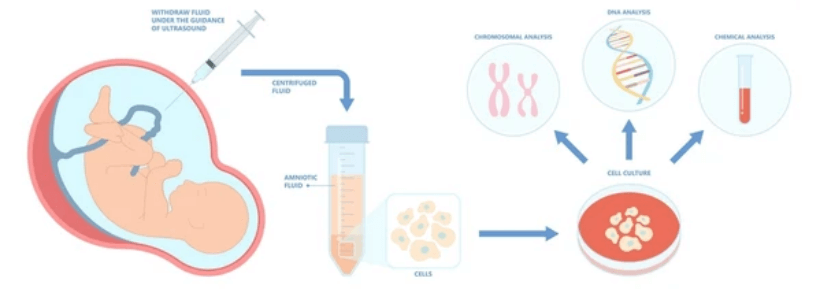Cytogenetic Analysis of Readily Available Human Samples
Human Cytogenetics and Laboratory Diagnosis
In human cytogenetic studies, the most commonly used human tissues are peripheral blood, amniotic fluid, chorionic tissue, and skin fibroblasts. Peripheral blood lymphocytes are readily available and can be cultured for a short period of time, and high-quality medium-term spread can be prepared in a short period of time. Amniocytes and chorionic cells are important in some studies related to prenatal and postnatal diagnosis. Prenatal and postnatal skin fibroblasts and fibroblasts from aborted tissue can also be used in studies relevant to clinical diagnosis. In order to obtain good chromosome quality, to prepare chromatin fibers or metaphase chromosomes, a strategy of short-term culture and introduction of cell cycle arrest between metaphase and anaphase is usually employed. Interphase spread and a large number of previously redundant interphase nuclei in cytogenetic preparations are well suited for fluorescence in situ hybridization (FISH) analysis. This relatively definite incubation period is around 1 to 15 days, which is determined by the quality of the sample. Our FISH technology platform provides solutions for FISH analysis on such samples.

Laboratory Diagnostic for Peripheral Blood/Amniocytic Fluid/Chorion/Fibroblasts
Chromosome visualization analysis by FISH has been widely used in the chromosomal diagnosis of peripheral blood, amniotic fluid, chorionic tissue, and skin fibroblasts in human medical clinical diagnosis. In these applications, FISH technology can help researchers gain more knowledge from the visual diagnosis of cells in such samples. Some laboratories perform short-term cultures of 1-2 weeks on the obtained samples to ensure that researchers can perform analysis in good chromosomal conditions. This ensures good hybridization of a variety of probes, such as Whole Chromosomal Chromogenic Probes (WCP), Partial Chromosomal Chromogenic Probes (PCP), Site-Specific Probes (LPC), etc. Importantly, this type of sample is also suitable for some short-cycle "one-day" FISH and Flash-FISH methods for some researchers who wish to obtain initial laboratory diagnostic results quickly. Although the knowledge obtained from this laboratory diagnosis cannot be directly used for clinical diagnosis, it is of great significance for the study of some chromosomal abnormal events or gene expression in human diseases or pathological processes. In particular, human cell samples obtained prenatally and postnatally can be used to study some diseases related to human fertility and pregnancy, as well as genetic diseases in offspring.
 Fig 2. Essentials of FISH analysis of easily accessible human samples.
Fig 2. Essentials of FISH analysis of easily accessible human samples.
Creative Bioarray is committed to providing comprehensive FISH analysis technology services and diverse probes. Our platform focuses on the application of this technology to provide customers with high-quality maps. Our holistic outsourced analytical testing offers adaptive or fully customized solutions, including short-term culture and commercial probe generation based on client needs. If you are interested in our services, please contact us for cooperation. We look forward to cooperating with you in the near future.
Reference
- Weise A, Liehr T. Pre-and postnatal diagnostics and research on peripheral blood, bone marrow, chorion, amniocytes, and fibroblasts[M]//Fluorescence In Situ Hybridization (FISH). Springer, Berlin, Heidelberg, 2017: 171-180.
All products and services on this website are only suitable for non-medical purposes.



 Fig 2. Essentials of FISH analysis of easily accessible human samples.
Fig 2. Essentials of FISH analysis of easily accessible human samples.


